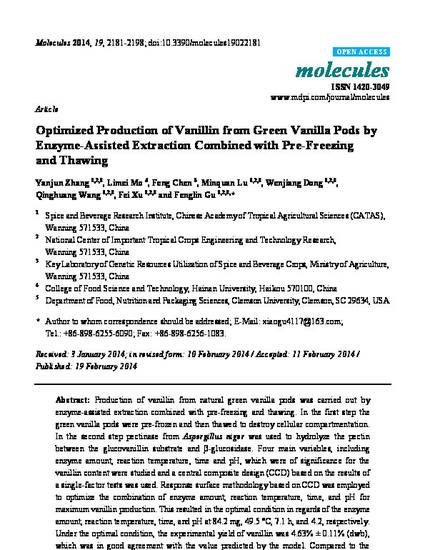
Production of vanillin from natural green vanilla pods was carried out by enzyme-assisted extraction combined with pre-freezing and thawing. In the first step the green vanilla pods were pre-frozen and then thawed to destroy cellular compartmentation. In the second step pectinase from Aspergillus niger was used to hydrolyze the pectin between the glucovanillin substrate and β-glucosidase. Four main variables, including enzyme amount, reaction temperature, time and pH, which were of significance for the vanillin content were studied and a central composite design (CCD) based on the results of a single-factor tests was used. Response surface methodology based on CCD was employed to optimize the combination of enzyme amount, reaction temperature, time, and pH for maximum vanillin production. This resulted in the optimal condition in regards of the enzyme amount, reaction temperature, time, and pH at 84.2 mg, 49.5 °C, 7.1 h, and 4.2, respectively. Under the optimal condition, the experimental yield of vanillin was 4.63% ± 0.11% (dwb), which was in good agreement with the value predicted by the model. Compared to the traditional curing process (1.98%) and viscozyme extract (2.36%), the optimized method for the vanillin production significantly increased the yield by 133.85% and 96%, respectively.

This is an open access article distributed under the Creative Commons Attribution License which permits unrestricted use, distribution, and reproduction in any medium, provided the original work is properly cited.